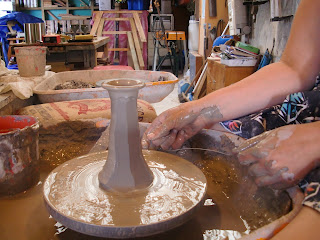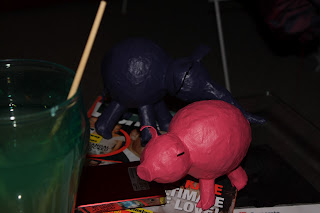Here is the assignment from week 7 of Digital Literacy.
CASE study 1:
In 1976, ex-Beatle George Harrison was found guilty of copyright infringement for his hit single, "My
Sweet Lord." Bright Tunes Music Corporation had obtained the copyright for the 1963 hit, "He's So Fine," which was written by Ronald Mack and originally performed by The Chiffons. Did George Harrison borrow his musical ideas from Mack's hit song? Judge for yourself.
Listen to the songs here:
http://www.benedict.com/audio/Harrison/Harrison.aspx
Melody: 4
Harmony/Chordal Structure:3
Rhythm: 3
Tempo: 3
Lyrics: 2
Instruments: 3
How else are the two songs similar? They both follow the same beat even with the difference in lyrics and length they sound very similar.
How are the two songs different? The lyrics and length are the biggest differences in the two songs.
RATING SYSTEM: 5=Exactly the same 4=Very similar 3=Somewhat alike 2=Barely the same 1=Not alike in any way
CASE study 2:
In 1987, artist Lebbeus Woods took a graphite pencil and created his vision of a chair. The chair is shown inside a large chamber with a high ceiling, mounted on a wall in front of a suspended sphere, and with a visibly jointed grid forming the floor and wall.
Universal Studios released the film 12 Monkeys in December of 1995. Bruce Willis plays the distraught time traveler, Joe. In the beginning of the movie, Joe is brought into the interrogation room and told to sit in a chair which is attached to a vertical rail on the wall. As Joe sits in the chair, it slides up the rail, suspending Joe helplessly several yards above the floor. A sphere supported by a metal armature is suspended directly in front of Joe, probing for weaknesses as the inquisitors interrogate him.
Read the case study and look at the drawing and the movie:
http://www.benedict.com/Visual/Monkeys/Monkeys.aspx
Was this chair the same chair the Woods had drawn?
The resemblance of the chair drawn by woods and the one used to sit Joe in the the movie seem to be almost, if not entirely identical especially the details surrounding the chair itself it seems as though very little modification to the original idea was used
CASE study 3:
visit:
http://www.youtube.com/watch?v=S6eHcQhUH7Q
Oh so criminal was created as a response to the Australian Government's (in particular the Attorney-
General's office) "Fair Use and Other Copyright Exceptions: An examination of fair use, fair dealing and other exceptions in the Digital Age" Issues Paper, provided in May 2005.
to quote: Some interest groups feel a copyright balance might be better maintained in a rapidly changing digital environment if the Copyright Act were to include an open-ended 'fair use' exception that would allow the courts to determine whether a particular use of copyright material is 'fair' and should be lawful. Others argue the present specific exceptions in the Act should be amended to make certain uses of copyright material lawful. Instead of writing a wordy submission to the Government Keir Smith decided to make an example of something that is currently illegal, but thinks should be covered by 'fair use'.
Do you think his work is ‘illegal’? should it be?
Keir Smiths work is most definitely in this time we live in is illegal as he has used many copyrighted brands, songs and logos without modification though out the entire video. But in my opinion this should be legal, as the way he has done it with a montage to demonstrate a point of view rather than to generate revenue.







































